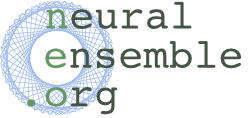Presentation
Introduction
My name is Ramon Heberto Martinez and I am student in the Erasmus Mundus Master in Complex Systems Science. I will use the coming series of entries in this blog to describe and report my progress in the project for Google Summer of Code 2014 (GSoC 2014). I have been lucky enough to have my proposal entitled Open source, cross simulator, large scale cortical models with the International Neuroinformatics Coordinating Facility (INCF). This project will be co- mentored by Andrew Davison at the INCF's French branch and Padraig Gleeson from the INCF branch in the UK.
The Project
As we advance the study of the brain we have required more powerful tools to study it. In particular more powerful computational tools have become available as well as more elaborated simulation environments. An example of these efforts is the Open Source Brain Project (OSB) project that provides a space where the computational models can be built collaboratively and shared with open standards such as PyNN [Davison et al., 2008] and NeuroML [Gleeson et al., 2010].
On the other hand there is a lack of well tested open models that can serve as benchmarks to test and reliably compare the capabilities of the different environments. It is the spirit of this project to try to reduce the lack of such models. In particular this project will consist on developing models of the visual system which, at the date that I write, is an area not very well covered by the OSB project so far
The work specifically will consist on developing the code of the models below in PyNN and release them as free code in the platform of the Open Source Brain Project
.
Papers:
- Different roles for simple-cell and complex-cell inhibition in v1 [Lauritzen and Miller, 2003].
- Inhibitory stabilization of the cortical network underlies visual surround suppression [Ozeki et al., 2009]
- Feedforward origins of response variability underlying contrast invari- ant orientation tuning in cat visual cortex [Sadagopan and Ferster, 2012]
References and Links
References
- Andrew P Davison, Daniel Br ̈derle, Jochen Eppler, Jens Kremkow, Eilif Muller, Dejan Pecevski, Laurent Perrinet, and Pierre Yger. Pynn: a common interface for neuronal network simulators. Frontiers in neuroinformatics, 2, 2008.
- Padraig Gleeson, Sharon Crook, Robert C Cannon, Michael L Hines, Guy O Billings, Matteo Farinella, Thomas M Morse, Andrew P Davison, Subhasis Ray, Upinder S Bhalla, et al. Neuroml: a language for describing datadriven models of neurons and networks with a high degree of biological detail. PLoS computational biology,(6):e1000815, 2010.
- Thomas Z Lauritzen and Kenneth D Miller. Different roles for simple-cell and complex-cell inhibition in v1. The Journal of neuroscience, 23(32):10201–10213, 2003.
- Hirofumi Ozeki, Ian M Finn, Evan S Schaffer, Kenneth D Miller, and David Ferster. Inhibitory stabilization of the cortical network underlies visual surround suppression. Neuron, 62(4):578–592, 2009.
- Roger D Peng. Reproducible research in computational science. Science (New York, Ny), 334(6060):1226, 2011.
- Srivatsun Sadagopan and David Ferster. Feedforward origins of response variability underlying contrast invariant orientation tuning in cat visual cortex. Neuron, 74(5):911–923, 2012.
Links
Project Page at INCFPyNN
NeuroML
Open Source Brain Project
Neural Ensemblet
International Neuroinformatics Coordinating Facility
Google Summer of Code 2014

No comments:
Post a Comment